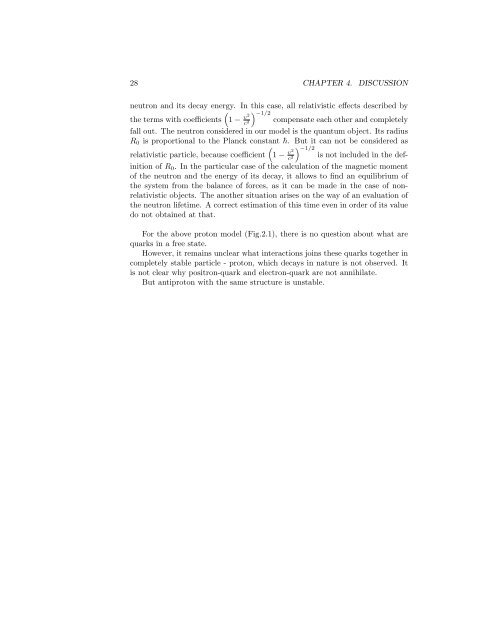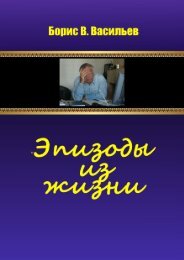VbvNeuE-001
Boris V. Vasiliev About Quantum-Mechanical Nature of Nuclear Forces and Electromagnetic Nature of Neutrinos
Boris V. Vasiliev
About Quantum-Mechanical Nature of Nuclear Forces
and Electromagnetic Nature of Neutrinos
Create successful ePaper yourself
Turn your PDF publications into a flip-book with our unique Google optimized e-Paper software.
28 CHAPTER 4. DISCUSSION<br />
neutron and its decay energy. In this case, all relativistic effects described by<br />
( ) −1/2<br />
the terms with coefficients 1 − v2<br />
c compensate each other and completely<br />
2<br />
fall out. The neutron considered in our model is the quantum object. Its radius<br />
R 0 is proportional to the Planck constant . But it can not be considered as<br />
( ) −1/2<br />
relativistic particle, because coefficient 1 − v2<br />
c is not included in the definition<br />
of R 0 . In the particular case of the calculation of the magnetic moment<br />
2<br />
of the neutron and the energy of its decay, it allows to find an equilibrium of<br />
the system from the balance of forces, as it can be made in the case of nonrelativistic<br />
objects. The another situation arises on the way of an evaluation of<br />
the neutron lifetime. A correct estimation of this time even in order of its value<br />
do not obtained at that.<br />
For the above proton model (Fig.2.1), there is no question about what are<br />
quarks in a free state.<br />
However, it remains unclear what interactions joins these quarks together in<br />
completely stable particle - proton, which decays in nature is not observed. It<br />
is not clear why positron-quark and electron-quark are not annihilate.<br />
But antiproton with the same structure is unstable.












